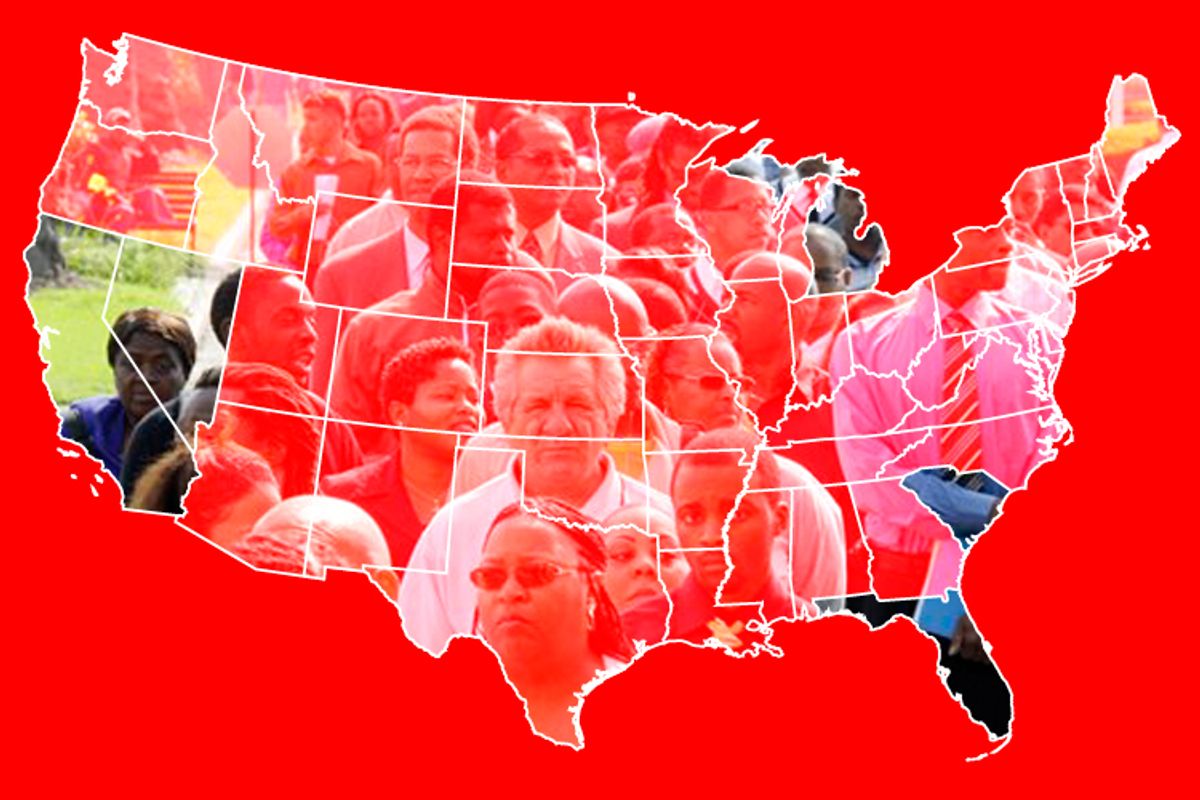What can we learn about the Great Recession from Friday's release of state unemployment numbers? Overall, not a whole lot changed in August from July: 26 states reported unemployment rate increases, 12 states recorded rate decreases, and 12 states reported no change at all.
But a look inside the numbers, at the five worst and five best states, is unhappily revealing. The states with the five highest unemployment rates are Nevada (13.4 percent), California (12.1 percent), Michigan (11.2 percent), South Carolina (11.1 percent) and Florida (10.7 percent.) Nevada, California, Michigan and South Carolina all registered unemployment increases in August, compared to July. Florida held even.
The states with the lowest unemployment rates are North Dakota (3.5 percent), Nebraska (4.2 percent), South Dakota (4.7 percent), New Hampshire (5.3 percent) and Oklahoma (5.6 percent.)
The combined population of the five worst states: 73,864,261.
The combined population of the five best states: 8,380,933.
The unavoidable conclusion: Unemployment is bad and getting worse in some of the most highly populated regions of the United States.
What does the geographical distribution of the hardest hit areas tell us? Again, not a whole lot that's new. California, Florida and Nevada were among the three states hit hardest by the housing collapse, with Nevada getting the extra negative bonus of depressed Las Vegas tourism. Michigan, battered by globalization and the woes of the auto industry, has long been near the top of the unemployment charts. (Although the state had been improving quickly until about four months ago, when unemployment started rising again.) South Carolina's high unemployment rate has been something of a mystery for years. Perhaps the most that can be said is that as a relatively low-tax state dominated by some of the most conservative Republican politicians in the country, it is certainly no advertisement for conservative orthodoxy, at least as far as boosting employment goes.
And what about the political implications? If we accept RealClearPolitics' list of Florida, Ohio, Virginia, Wisconsin and Colorado as the five most important "swing states" of 2012, we see that unemployment held even (at high levels) in Florida and Ohio (9.1 percent) and ticked up in Virginia (6.3 percent), Wisconsin (7.9 percent) and Colorado (8.5 percent.)
It's worth remembering that economic discontent undoubtedly contributed to the recent election of conservative governors in Florida, Ohio, Virginia and Wisconsin. Prognosis for the White House? Bad.

Shares